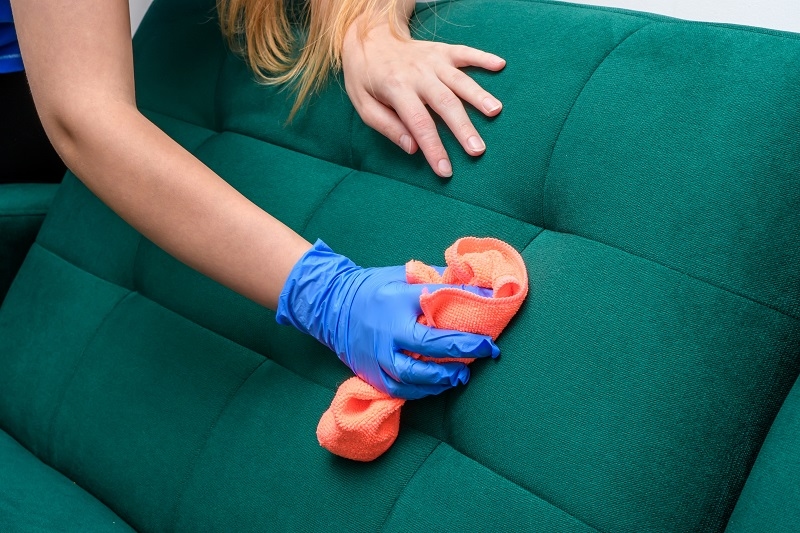
A mid-century modern living room is charming due to its simplicity, form, and timelessness. Originating in the mid-20th century, this design approach is inspiring to homeowners who want to add vintage charm and modern sensibility. Whether you have an old mid-century furniture book lying around, are collecting ideas for your own retro living room, or are simply looking for some inexpensive mid-century sofas to refresh your living room, you have come to the right article for a guide to designing a comfortable, stylish, and functional mid-century modern living room.
Before you begin cleaning your sofa, it is essential to determine the type of fabric it is made of. Different types of fabrics have varying cleaning requirements, so it’s necessary to ensure that you don’t damage the fabric. The most common types of sofa fabrics that you’ll find include:
Knowing your fabric type will help you determine the best sofa cleaning supplies to use, thereby avoiding any damage to the upholstery during the cleaning process. If you have access to your sofa’s manufacturer tag, the cleaning codes may indicate something like “W” for a water-based cleaner, “S” for a solvent-based cleaner, or “WS” for either type.
To restore the 'new' look and smell to your sofa, it is essential to establish a consistent cleaning and general maintenance schedule. Here are some simple things to implement:
If you have children or pets, consider using a protective cover for the sofa.
Suppose you consistently make these quick and easy habits part of your daily or weekly routine. In that case, you will spend significantly less time dealing with a deeper upholstery cleaning, enjoy a longer lifespan for your sofa, and keep it fresher-smelling for longer.
When it’s time for a deeper clean, here’s a simple and effective process to safely clean fabric sofas:
This technique will keep your upholstery clean without damaging the fibers or color.
Accidents occur. Coffee can spill, food can stain, or ink can mark. Regardless of the type of stain that may occur on fabric, the success of stain removal relies on your ability to act quickly and to have the appropriate procedure to deal with the stain. Here are common fabric stains and how to resolve them:
Please always patch test any cleaner before applying it to ensure it is suitable for your skin. The greatest thing you can possess when dealing with fabric stains is patience, as rubbing too hard can spread the stain or damage the fabric fibers.
Cleaning upholstery thoroughly keeps your sofa clean, hygienic, and in excellent condition, which is beneficial for both its appearance and overall well-being. You can hire a cleaning professional to perform this service, but you can clean and sanitize upholstery nearly as well as a pro with the cleaning products below:
Cleaning upholstery regularly not only freshens your furniture but also prevents dirt from accumulating in the fabric, resulting in a healthier living space.

Your couch requires as much care as other household items you have invested in. This couch care guide will give you the path to maintaining your couch's structure and softness:
As long as you stick to a couch care guide like this one, your furniture will continue to look and feel great for years.
Choosing the best sofa cleaners will depend on what type of fabric your sofa is made from and your cleaning objectives. Some effective products include:
When using any cleaners, apply with a soft cloth in small, manageable sections. Please don’t get the fabric too wet, and always allow it to dry completely before sitting on it!
If you prefer chemical-free options, try natural alternatives that are safe and effective:
These eco-friendly ingredients make cleaning fabric sofas easy and safe for families and pets.
At times, stains or odors can linger despite your best efforts. This is when you can set up a professional upholstery cleaning. Professionals use specific equipment and detergents based on the type of fabric your sofa is made from. You should schedule professional cleaning at a minimum once a year, and more frequently if you have pets or children in the home.
Professional services support your at-home care plan for your couch, keeping your furniture looking better for longer.
To avoid damaging your furniture, steer clear of these cleaning errors:
Avoiding these pitfalls ensures that your efforts in cleaning fabric sofas lead to lasting results.
Consistency is key in maintaining a sofa at home. A simple monthly cleaning routine can make all the difference:
Following these steps keeps your sofa fresh, attractive, and ready for relaxation.
Regularly cleaning fabric sofas not only enhances the appearance of your home but also preserves the comfort and value of your furniture. By following these sofa cleaning tips, mastering fabric stain removal, and using the best sofa cleaners, you’ll ensure a spotless, cozy, and long-lasting centerpiece for your living space.
This content was created by AI